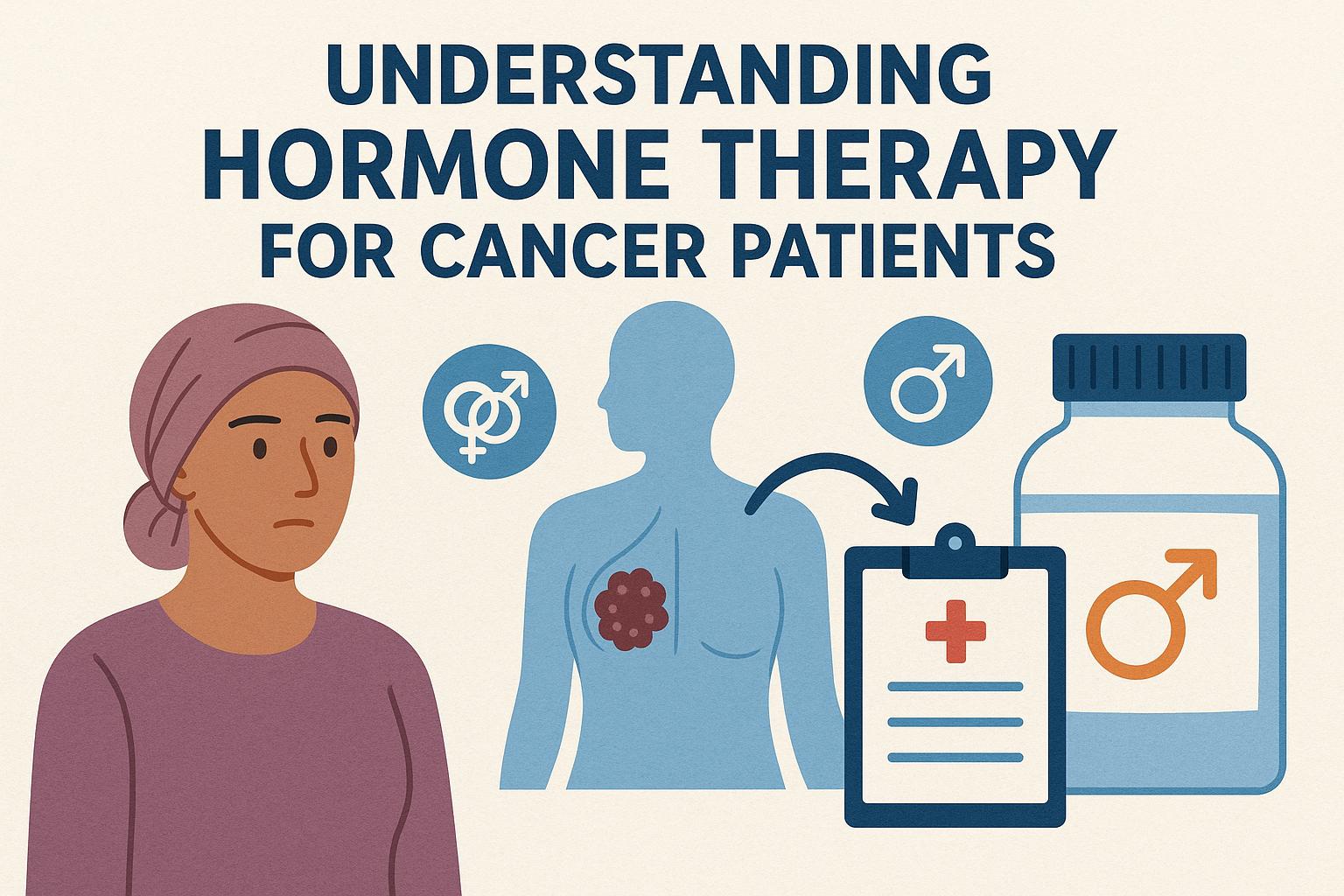Introduction to Hormone Therapy in Cancer Treatment
In cancer treatment, hormone therapy, often known as endocrine therapy, serves as a critical intervention for managing certain hormone-sensitive cancers. These include common types like breast and prostate cancers, which display a dependency on hormonal signals for growth and proliferation. By modifying the body’s hormone production or interfering with their action, hormone therapy aims to slow down or completely arrest the growth of cancer cells, thus offering an effective treatment strategy for many patients.
How Hormone Therapy Works
Hormone therapy predominantly targets cancers that rely on hormonal signals for their growth. Take, for example, many cases of breast cancer that are driven by the hormone estrogen. Similarly, prostate cancer often has a dependency on testosterone. The mechanism of hormone therapy can be understood through its multifaceted approach:
Lowering Hormone Levels: Reducing the concentration of hormones that promote cancer growth is central to hormone therapy. By depriving cancer cells of the necessary growth signals, the progression of the disease can be slowed or curtailed.
Blocking Hormone Receptors: Another strategy involves obstructing hormone receptors on cancer cells. This action prevents the cancer cells from receiving hormonal signals that would otherwise encourage growth.
Inhibiting Hormone Production: Hormone therapy can also involve suppressing the body’s ability to synthesize certain hormones critical for cancer cell survival and proliferation.
Types of Hormone Therapy
Hormone therapy includes several targeted approaches, each tailored to meet the specific needs of patients based on the nature of their cancer and hormonal profiles:
1. Anti-estrogens or Estrogen Blockers: These medications, such as tamoxifen, function by preventing estrogen from binding to its receptors on cancer cells. This obstruction serves to decelerate or halt the growth of tumors, making it a prevalent choice in treating hormone-receptor-positive breast cancer.
2. Aromatase Inhibitors: These drugs, including anastrozole and letrozole, target the enzyme aromatase, crucial for estrogen synthesis. By limiting the production of estrogen, these inhibitors effectively reduce hormone levels, thus benefiting patients with estrogen-dependent cancers.
3. Luteinizing Hormone-Releasing Hormone (LHRH) Agonists: Predominantly used in treating prostate cancer, these drugs act by lowering testosterone levels, an approach that substantially diminishes tumor growth or results in shrinkage.
4. Surgical Options: In some clinical scenarios, surgical interventions might be considered. Such surgeries involve removing hormone-producing organs like the ovaries or testicles, thereby significantly reducing hormone levels in the body and impacting hormone-sensitive cancers.
Who Can Benefit?
The application of hormone therapy is generally confined to cancers identified as hormone-receptor positive. For instance, in breast cancer patients, the presence of estrogen or progesterone receptors determines the use of this therapy. Similarly for prostate cancer, the sensitivity to testosterone is a critical determinant. The eligibility for hormone therapy is a nuanced decision made based on comprehensive testing and individual cancer characteristics, ensuring an optimal response to the treatment.
Side Effects and Considerations
While hormone therapy offers significant benefits, it also comes with a spectrum of potential side effects. These effects can vary widely depending on the specific therapy and its duration. Patients might experience symptoms such as hot flashes, fatigue, mood swings, and changes in libido. Other potential side effects can include weight gain, nausea, osteoporosis, and an increased risk of other health conditions. It is imperative for patients to have thorough discussions with their healthcare providers about these risks so that they are well-prepared to manage and mitigate adverse effects effectively.
In addition to addressing side effects, considering the integration of supportive care plays a valuable role. Nutritional support, physical therapy, and psychological counseling can be pivotal in enhancing patients’ overall well-being during treatment, boding well for both their physical health and emotional resilience.
For patients and their families seeking to deepen their understanding of hormone therapy, a visit to reputable sources such as the National Cancer Institute can offer invaluable insights. Moreover, their healthcare team remains a vital resource for personalized advice and guidance.
Conclusion
Hormone therapy remains an indispensable modality in the arsenal against hormone-sensitive cancers. When used in conjunction with other treatment options like chemotherapy, radiation, or surgical interventions, its efficacy is further amplified. Understanding how hormone therapy operates and appreciating its potential implications allow patients and healthcare professionals to collaboratively make well-informed decisions. This collaborative decision-making process is integral to tailoring treatment plans that are not only effective but also aligned with patients’ individual health profiles and quality of life objectives. Through thoughtful application and diligent management, hormone therapy continues to offer hope and improved outcomes for individuals grappling with cancer.
This article was last updated on: October 25, 2025

